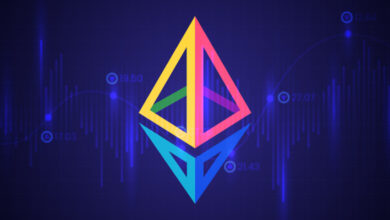Hyperledger Fabric 2.0 is released

Hyperledger, an open source collaborative effort created to advance cross-industry blockchain technologies, has released Hyperledger Fabric 2.0. This major release of Hyperledger Fabric, delivers a number of features and enhancements needed to increase the efficiency and security of production deployments.
Much of the work on Hyperledger Fabric 2.0 focused on new ways to manage the chaincode (or smart contract) lifecycle to maximize flexibility, remove bottlenecks and create more options to distribute governance. Security and data privacy were also big development priorities, so many features and enhancements are geared towards delivering more granular control of private channels and minimizing vulnerabilities.
Key features include:
Decentralized governance for smart contracts — Hyperledger Fabric 2.0 introduces decentralized governance for chaincode, with a new process for installing a chaincode on your peers and starting it on a channel. The new Fabric chaincode lifecycle allows multiple organizations to come to agreement on the parameters of a chaincode, such as the chaincode endorsement policy, before it can be used to interact with the ledger. The new model offers several improvements over the previous lifecycle, including requiring multiple organizations to agree to the parameters of a chaincode, creating a more deliberate chaincode upgrade process and simplifying endorsement policy and private data collection updates
New chaincode application patterns for collaboration and consensus — The same decentralized methods of coming to agreement that underpin the new chaincode lifecycle management can also be used in your own chaincode applications to ensure organizations consent to data transactions before they are committed to the ledger. Organizations can add automated checks to chaincode functions to validate additional information before endorsing a transaction proposal. Additionally, human decisions can be modeled into a chaincode process that spans multiple transactions. The chaincode may require actors from various organizations to indicate their terms and conditions of agreement in a ledger transaction. Then, a final chaincode proposal can verify that the conditions from all the individual transactors are met, and “settle” the business transaction with finality across all channel members.
External chaincode launcher —The external chaincode launcher feature empowers operators to build and launch chaincode with the technology of their choice. Use of external builders and launchers is not required as the default behavior builds and runs chaincode in the same manner as prior releases using the Docker API.
Private data enhancements — Hyperledger Fabric 2.0 enables new patterns for working with and sharing private data, without the requirement of creating private data collections for all combinations of channel members that may want to transact. Specifically, instead of sharing private data within a collection of multiple members, you may want to share private data across collections at a transaction or state key level with selected channel members. Each private data collection may contain a single organization, or perhaps a single organization along with a regulator or auditor.
State database cache for improved performance on CouchDB — When using external CouchDB state database, read delays during endorsement and validation phases have historically been a performance bottleneck. With Hyperledger Fabric 2.0, a new peer cache replaces many of these expensive lookups with fast local cache reads.
Alpine-based docker images — Starting with 2.0, Hyperledger Fabric Docker images will use Alpine Linux, a security-oriented, lightweight Linux distribution. This means that Docker images are now much smaller, providing faster download and startup times, as well as taking up less disk space on host systems. Alpine Linux is designed from the ground up with security in mind, and the minimalist nature of the Alpine distribution greatly reduces the risk of security vulnerabilities.
“Hyperledger Fabric has established itself as a popular and practical distributed ledger framework and has powered much of the transition from conceptualization to commercialization we’ve seen in enterprise blockchain,” said Brian Behlendorf, Executive Director, Hyperledger. “Fabric 2.0 is a new generation framework developed by and for the enterprises that are building distributed ledger capabilities into the core of their businesses. This new release reflects both the development and deployment experience of the Fabric community and confirms the arrival of the production era for enterprise blockchain.”
“The release of Hyperledger Fabric 2.0 is an important step forward in the on-going evolution of DLT, and was developed based on feedback from real-world use, including improved chaincode management capabilities and performance enhancements,” stated Rob Palatnick, Managing Director and Global Head of Technology Research and Innovation at The Depository Trust & Clearing Corporation (DTCC) and Governing Board Chair at Hyperledger. “DTCC’s work with Hyperledger enables us to bring DLT expertise and knowledge in-house while contributing our learnings and progress on enterprise-scale projects with the DLT community. We look forward to our continued efforts around Fabric 2.0 and in working with Hyperledger.“
“I am delighted to see Hyperledger Fabric v2.0 released,” said Nao Nishijima, Researcher, Hitachi, Ltd. “Hitachi has contributed to the social innovation through the development of superior, original technology and products since its foundation in 1910. Hitachi believes that Hyperledger Fabric v2.0 and related blockchain technologies will further expand the possibility to merge sustainability and business and to resolve social issues through the contribution to the initiatives like Society 5.0 and Sustainable Development Goals (SDGs). Hitachi continues to contribute to the Hyperledger community and to provide blockchain solutions for various industries.”
“IBM is excited about this key milestone in Hyperledger Fabric’s development lifecycle,” said Jerry Cuomo, IBM Fellow and VP of Blockchain Platform, IBM. “We are proud to have been part of the community that has collaborated on its development, and we are eager to upgrade the IBM Blockchain Platform — industry’s first multi-cloud implementation of Hyperledger Fabric — to leverage the new capabilities and improved performance in this milestone release.”





